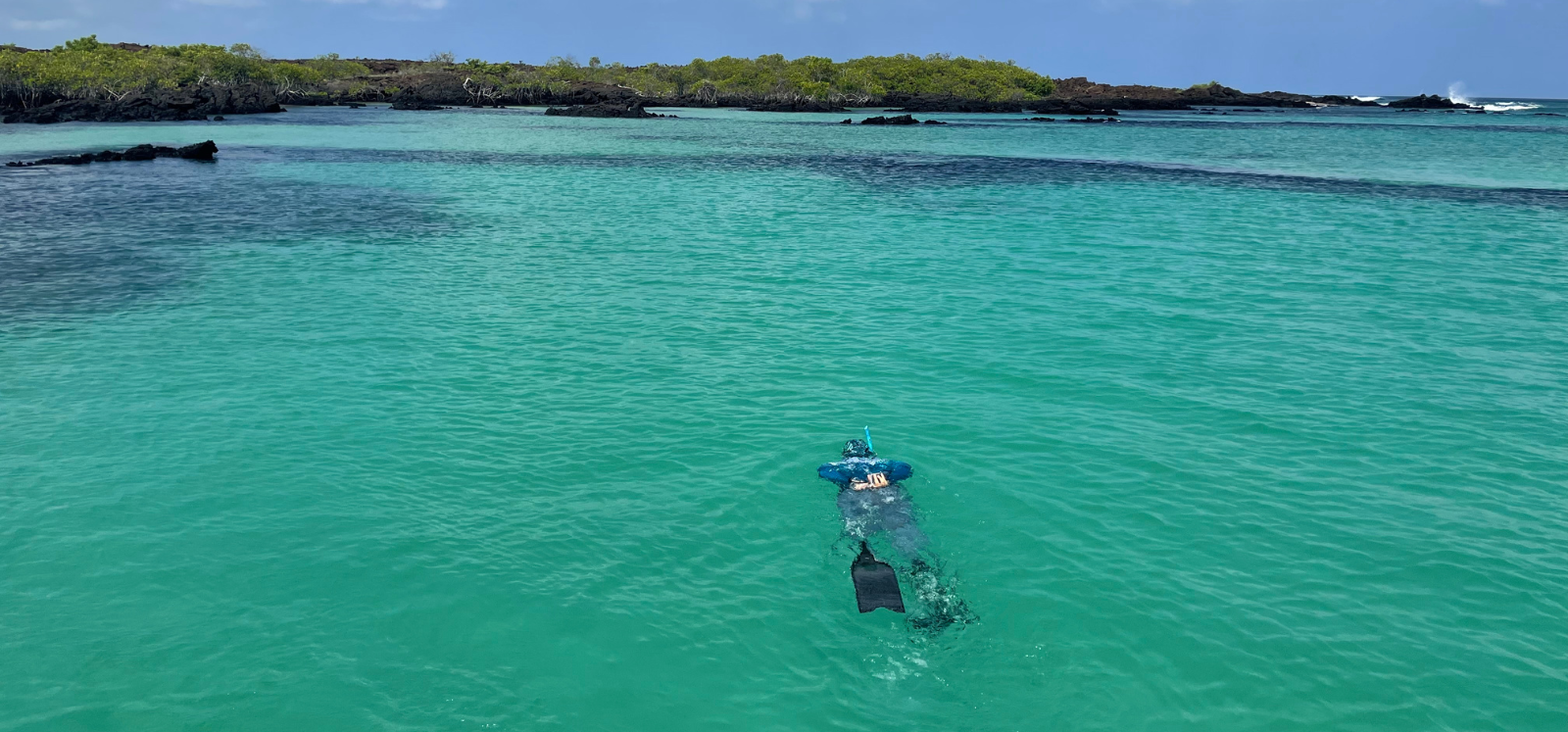PhD Expedition Maps Critical Habitats of Mobula Rays in the Galápagos Islands
Farah Hamdan’s latest fieldwork explores how mobula rays can be better protected through science, policy, and local collaboration.

Farah Hamdan, current PhD candidate and BSc Environmental Management and MSc Ecological Management and Conservation Biology Graduate, recently returned from a multi-institutional scientific expedition in the Galápagos. The Galápagos National Park Directorate, in collaboration with the Universidad San Francisco de Quito, the Galapagos Science Center, and Proyecto Mantas Ecuador, carried out a scientific expedition in the southern and eastern regions of Isabela Island. Supported by Brookfield Zoo Chicago’s Sarasota Dolphin Research Program, Mote Marine Laboratory, Georgia Aquarium, and the Ocean Tracking Network, the research provided data for at least four different research projects, with Farah's focus being Mobula Rays. Speaking on what drew her to the field, Farah said:
“Mobula rays are charismatic and poorly understood creatures facing increasing pressure from fisheries and tourism. Despite their vulnerability, they remain data-deficient and are often excluded from conservation priorities. I’ve always been fascinated by their ecology, and their cultural significance and economic value that seems to differ greatly across regions. This research allows me to connect science with policy and practice—working toward real-world solutions that benefit both biodiversity and local communities.”
During the March 2025 expedition, Farah and the team conducted drone surveys, snorkelling and diving observations, and tagging of oceanic manta rays to identify aggregation sites and habitat use. They confirmed the presence of key aggregations for M. munkiana and M. thurstoni, identified cleaning stations for M. thurstoni, and new distribution data for M. mobular and M. tarapacana.
“This fieldwork was essential. It helped validate years of citizen science data, and provided the opportunity to ground-truth species occurrence models developed through MaxEnt. It also strengthened my collaborations with regional partners and yielded high-quality genetic data that I’ll be analysing throughout my PhD. Perhaps most importantly, the research trip gave me deeper insight into the local socio-ecological context, which is vital for developing sustainable tourism and fisheries strategies.”
Farah’s expedition blog and image gallery can be viewed here.
